Best
Budget
Digital Piano
by Gear4music SOUND AND FEEL OF A REAL PIANO
-
Overall: 88-Key Digital Piano
Ideal For Living Spaces -
Best Feature: Synthetic Ebony And Ivory Keys Provide That Premium Grand Feel
-
TedScore™: 8.5/10
Best
Overall
Grand Piano
Grand Piano INCREDIBLE SOUND AND LONGEVITY
-
Overall:
Utilizes 3 Pedals For Full Sostenuto -
Best Feature:
Made From High-Quality Materials -
TedScore™: 9/10
Best
Digital Upright Piano
Digital Piano UNMISTAKABLE QUALITY AND STYLE
-
Overall: OLED Display That Makes Navigation Easy
-
Best Feature: Spatial Headphone Sound Technology Enhances The Depth And Realism Of The Sound
-
TedScore™: 8.5/10
Learning piano terms may seem like picking up a new language, but believe me, it’s a game changer when playing the piano.
You’ll soon be chatting about arpeggios and dynamics as if they were old friends.
When I first sat down at the piano, terms like staccato and legato were as baffling as a grumpy cat for Monday mornings, but they opened up a whole new world of expression in my playing.
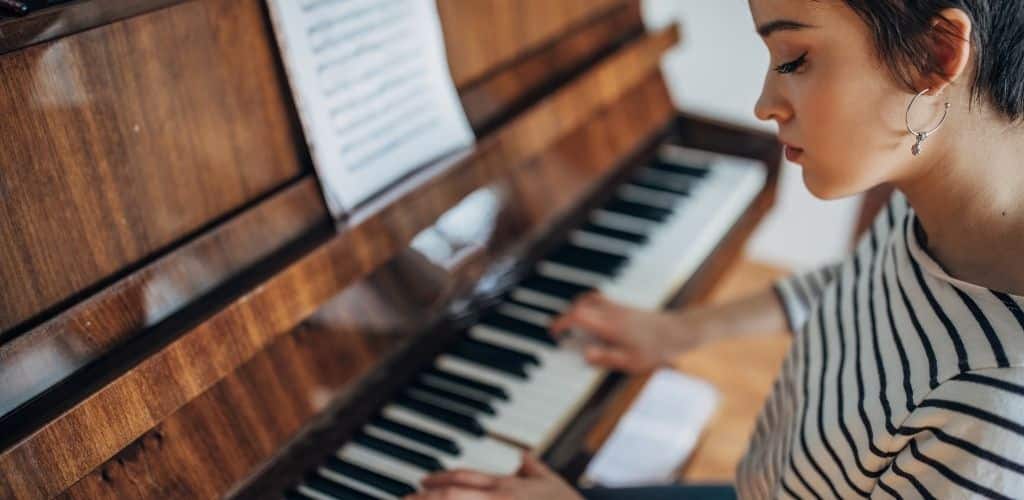
Understanding these terms is like having a secret key to unlock the full storytelling potential of your piano. I’m excited to share what helped me go from playing basic tunes to playing with style.
Keep reading, and those black and white keys will sing harmoniously with your newfound knowledge.
Before you know it, you’ll be weaving through music sheets easily and feeling the thrill of every crescendo and diminuendo.
Musical Terms and Marking
Navigating the landscape of musical terms and markings is like decoding a secret language.
I’m thrilled to guide you through the dynamic symphony of symbols that give a piece of music its emotional depth and rhythmic flow.
Dynamic Markings
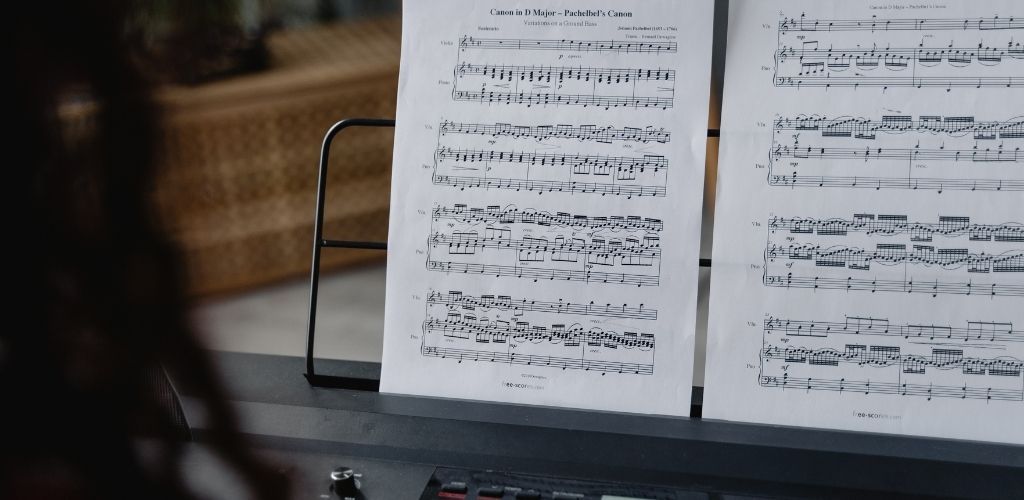
Dynamic markings are the heartthrobs of music expression, telling us just how loud or soft to play.
Look for the piano (p) when the music should be played softly or forte (f) for a louder touch.
A crescendo slowly increases volume, whereas a decrescendo or diminuendo guides us to quiet down gradually.
Tempo Markings et al.
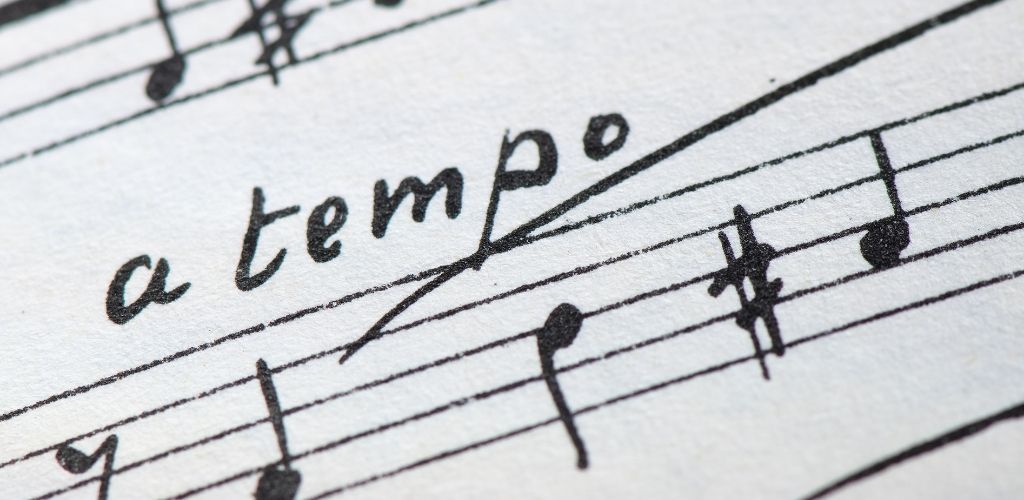
Ah, tempo markings – the pulse of a piece! They set the speed and keep the music alive.
Ritard (rit.) coaxes us to slow down gracefully, adding a touch of drama before a potential pause or end.
If you’ve come across da capo, prepare to head back to the start, while subito piano is your cue to suddenly soften the dynamics, like a whisper after a shout!
Other Expressive Markings
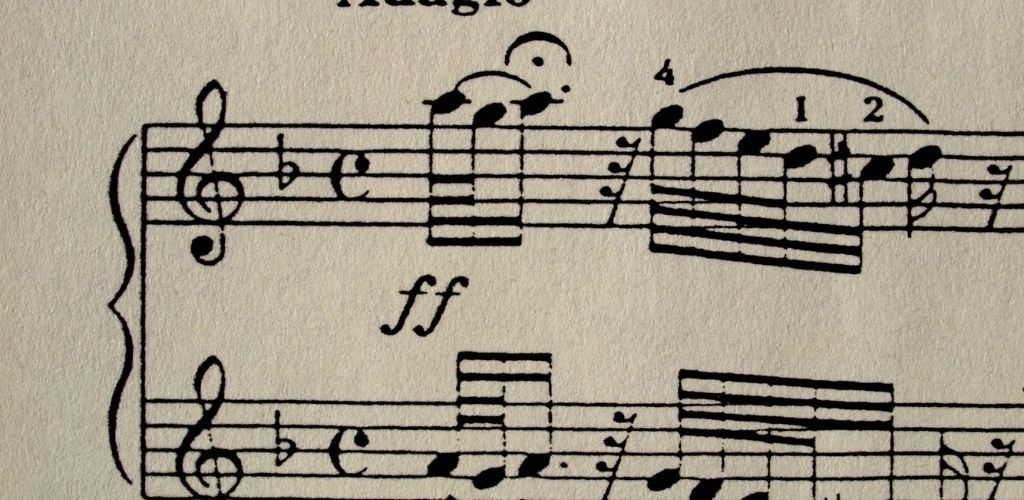
Spot a fermata? It’s time to hold that note longer than usual, lingering on it like a fond memory.
Meanwhile, a turn is a playful moment where we swiftly dance around a central note, creating a delightful flourish. They’re like the winks and nudges in music, adding that extra sparkle to your performance.
Musical Notation
Before we tinkle the ivories, let’s get cozy with musical notation. It’s the ABC of piano language, showing everything from pitch and rhythm to dynamics and expression!
Reading Sheet Music

Reading sheet music is like reading a book, but instead of letters forming words, we have a merry mix of musical symbols creating a melody. To start, the beat is the heartbeat of the music. It’s what you tap your foot to!
Staff: It has five lines, each representing a different pitch.
Clefs: Treble for the high notes and bass for the low ones, ensuring each note sits comfortably on the staff.
Notes: They look like little ovals and tell me which pitch to play and for how long.
Tempo: Often marked in Italian (‘Allegro,’ ‘Andante’), it tells me how quick or slow to go.
I keep an eye out for the key signature at the start. It tells me which sharps or flats will attend the party throughout the piece.
Articulation and Expression Symbols
Let’s inject personality into those notes—make them dance or sing with expression and articulation symbols. I think of them as the spices that add flavor to a dish.
Staccato: Imagine plucking a string; that’s me playing a note sharply and briefly.
Legato: Smoothly connecting the notes is like gliding on ice.
For ups and downs in volume, I scout for symbols like forte (loud) or piano (soft).
They show me how to weave emotion into the music fabric—making it whisper or roar as needed.

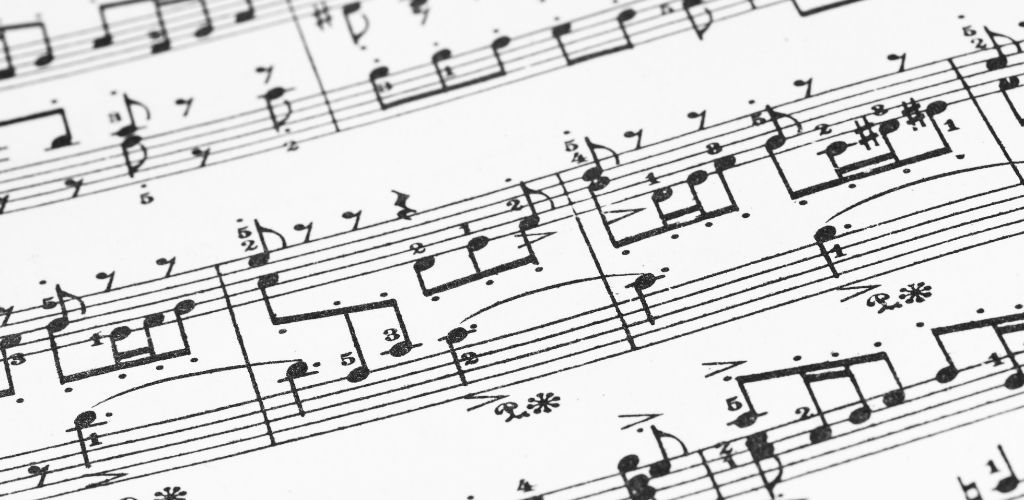
Piano Techniques
Navigating the piano is an adventure!
Every touch and pedal press can transform a piece of music. Let’s explore piano techniques, where fingers dance, and dynamics shape emotions.
Fingering and Dynamics
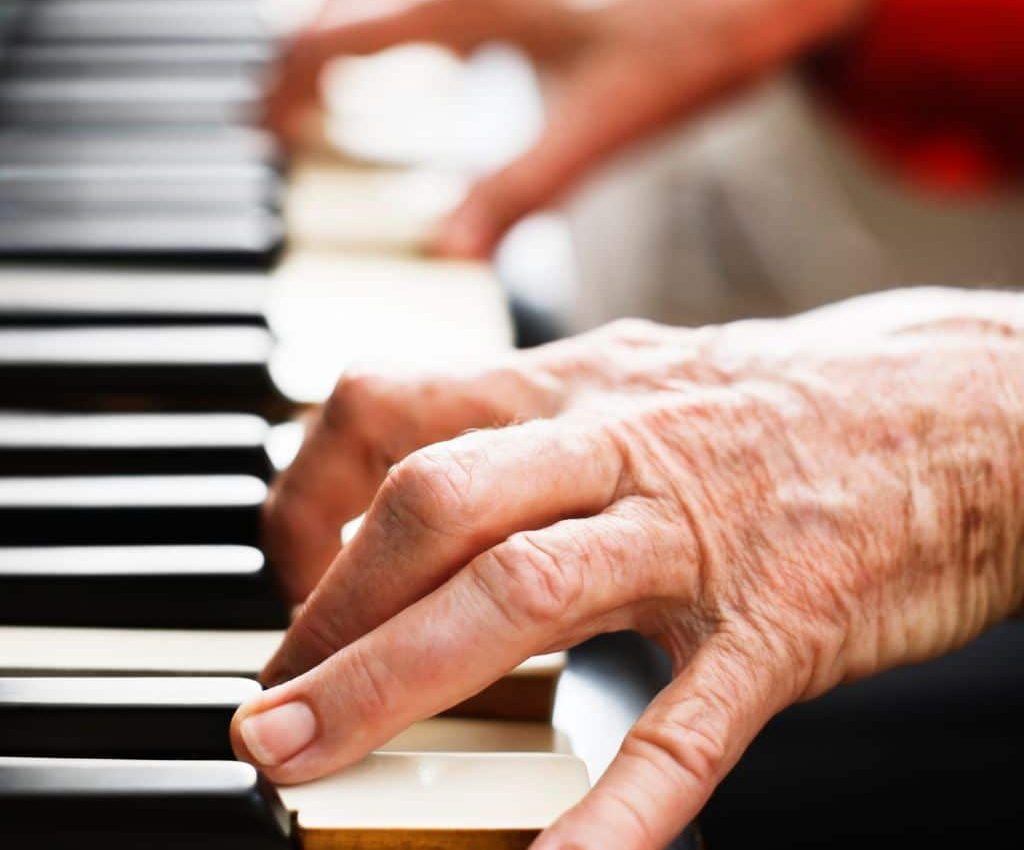
The foundation of expression on the piano starts at my fingertips.
Fingering, which refers to the placement and movement of fingers on the keyboard, is crucial for fluidity.
It’s the secret to mastering those tricky technical passages and can influence the musical phrasing—making it sound like a choppy sea or a smooth sailing river.
When it comes to dynamics, it’s all about contrast and color.
Imagine painting with sounds—using forte (loud) to make bold strokes or pianissimo (very soft) for gentle whispers.
Dynamic markings guide me to add oomph (accent) where needed or to caress the keys gently in more tender moments. The magic conveys the mood, whether I want to convey a stormy narrative or a gentle breeze.
Use of Pedals
Pedals are the salt and pepper of piano playing—seasoning the music just right.
The sustain pedal, which captures and blends the notes like holding hands, lets me sustain the sound even when my fingers leave the keys. It can create space, allowing for a legato touch where notes connect smoothly and lovingly.
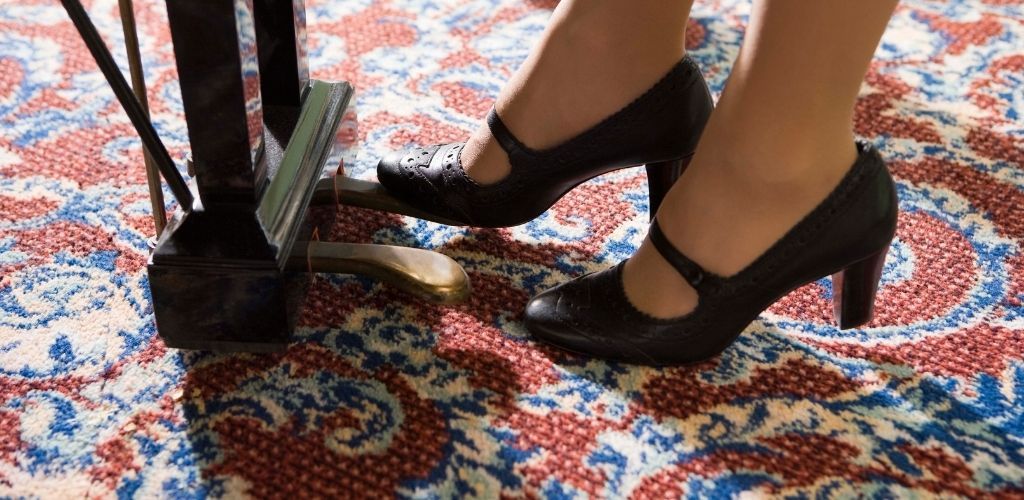
The una corda, or soft pedal, tells a different story.
Press it, and it’s like putting on a silencer; it softens the sound for those moments of tenderness or introspection. It shifts the hammers to strike fewer strings, giving me a softer tone.
In contrast, the rare gem sostenuto pedal allows me to sustain select notes while playing the rest of the staccato—short and detached. It’s like conversing, where only some words are bolded for emphasis.
Clever use of the pedals adds depth and texture to my narrative, making the piano sing, shout, and whisper.
Rhythm and Tempo
Dive into the world of piano music with me, and let’s explore the heartbeat of any piece: rhythm and tempo.
I’ll guide you through the essence of timing, from the structure of beats to the various speeds at which a piece can be played.
Understanding Beats and Measures
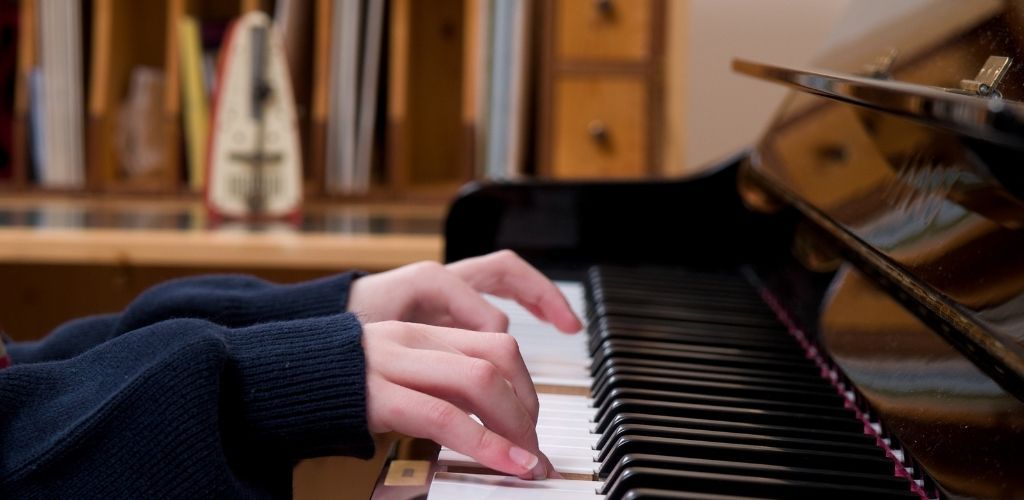
In the grand tapestry of music, beats are the consistent pulse you naturally tap your foot to, a bit like the ticking of a clock.
Think of beats as the skeleton of music; they give a song its basic structure and form. Measures, or bars, organize these beats into groups, which you can visually recognize in the sheet music by those vertical lines marching across the staff.
Now, here’s a nifty gadget that every pianist should befriend: the metronome.
Your timekeeper is reliably ticking away to help you keep a steady beat, whether the music is fast, slow, or somewhere in between.
Tempo Variations
Tempo is the speedster of the music world, determining how quickly or leisurely a piece should trot along. It’s notated at the start of a score and can change throughout to add some spice. Here are some key tempo terms you might encounter:
Adagio: A stroll of a tempo, quick.
Andante: A bit more pep in its step; it’s like a brisk walk through the park.
Allegro: Now we’re jogging, lively and swift.
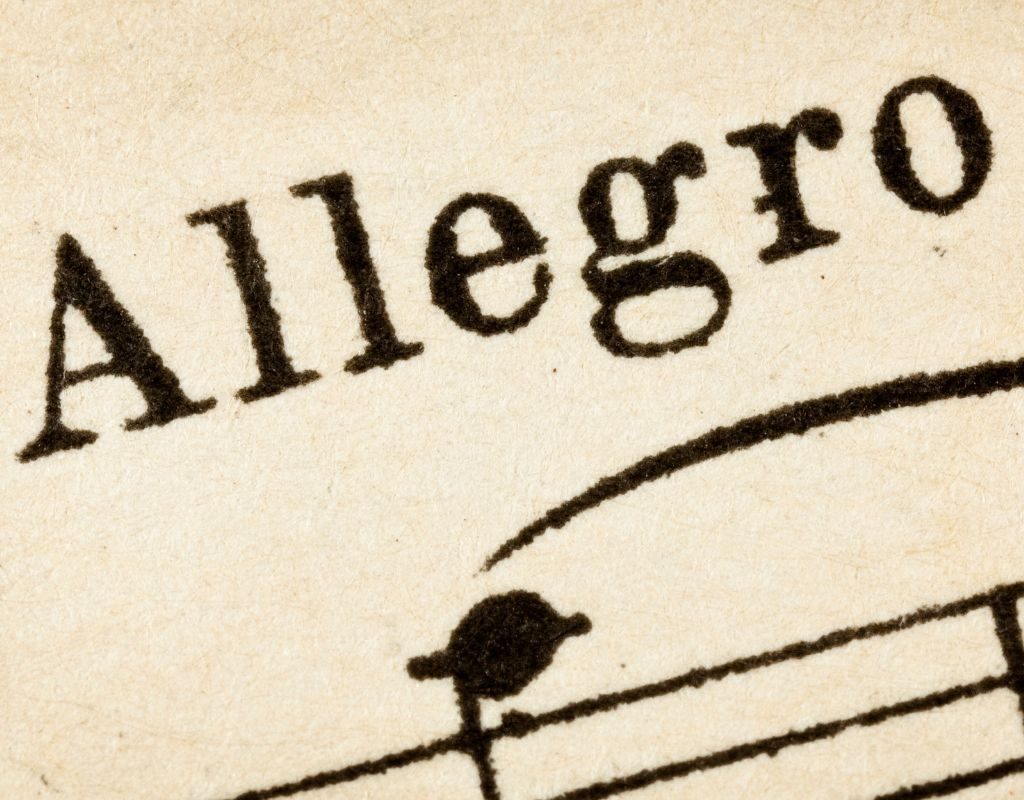
Remember rubato, a charming Italian term meaning ‘stolen time.’ It’s where I get to be cheeky and play with the tempo, stretching and compressing the beat for dramatic effect.
Speaking of drama, syncopation adds a splash of the unexpected by accentuating beats that usually don’t get much attention, keeping the audience on their toes!
With rhythm as the pattern of beats, syncopated accents, and tempo dictating the pace, mastering both is like learning to dance with the music.
And honestly, there’s nothing quite like the feeling of having music dance under my fingertips!
Piano Scales and Chords
I’m thrilled to share the magic of piano scales and chords with you! They’re the backbone of music creation, offering a framework for melody and harmony.

Scale Structures
When I think of scale structures, I see them as the foundation for all the tunes that dance in our ears.
The major scale is like my cheerful friend, ringing in with seven distinct notes following a pattern of whole and half steps: whole, whole, half, whole, whole, whole, whole, half. It sounds optimistic.
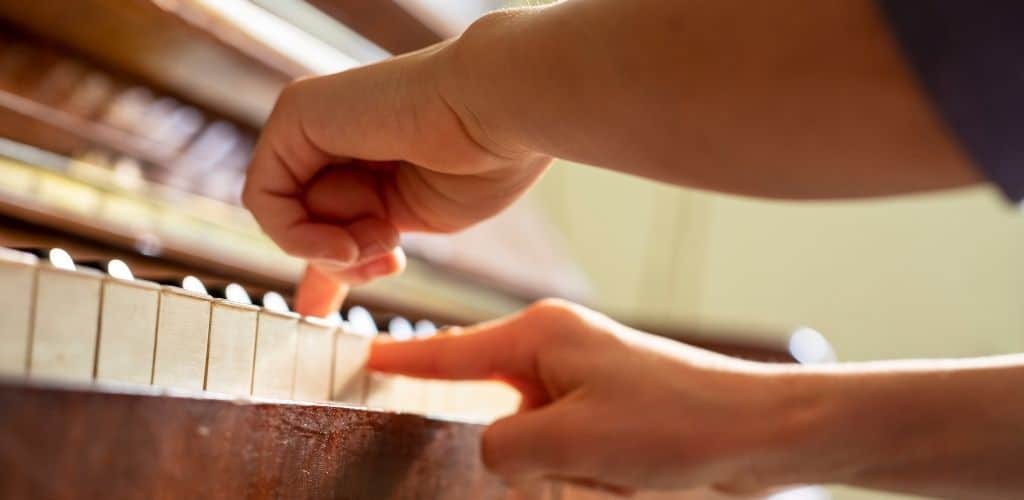
In contrast, the minor scale is more reflective and complex—like a friend who’s a touch mysterious. A natural minor scale follows a different pattern: whole, half, whole, whole, half, whole, whole.
That delightful step variance gives each scale its unique character and emotional flavor.
Chord Progressions and Triads
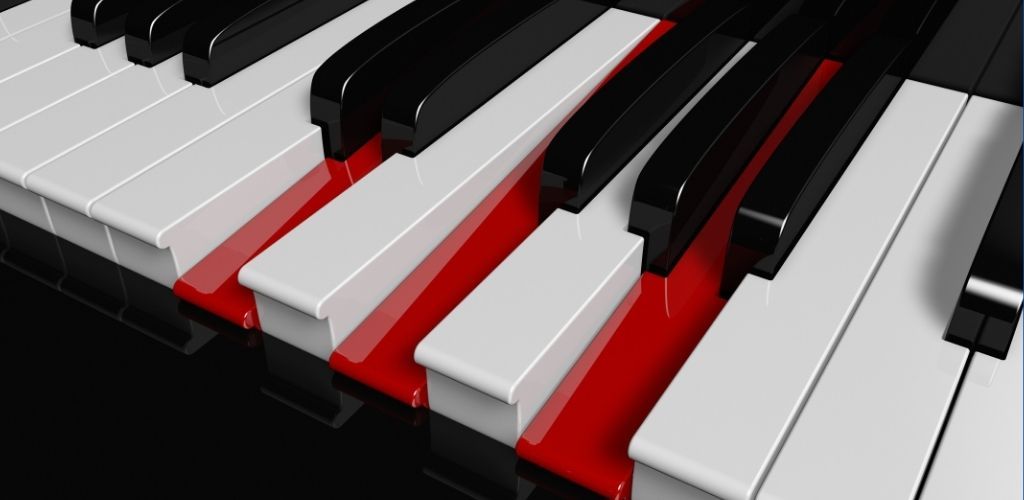
Now let’s talk about chord progressions, the narrative of a piece that keeps our toes tapping.
A chord progression is a sequence of chords played in a piece of music; think of it as a conversation between different musical ideas. It makes a tune feel like it’s going somewhere, leading you through the story.
Triads are a bash of three notes that create the simplest type of chord, like the best pals huddled together. They’re formed by taking a root note and adding the third and fifth scale degrees above it.
When I play a triad arpeggio, where each chord note is played in sequence, it’s like sending twinkles up and down the piano. It adds a sprinkle of elegance to any melody!
Advanced Playing Techniques
When I play the piano, mastering advanced techniques elevates my performance from good to breathtaking. Allow me to share a few jewels that can transform your piano playing.
Ornamentations
Ornaments in music are the equivalent of sparkle in jewelry, adding beauty and complexity to a piece.
It’s thrilling to nail the timing and touch of trills — rapid alternation between two adjacent notes. They add a lively, vibrating character and can vary in speed.

A mordent is similar but cheekier; it involves playing a note, the note above, and then returning to the original note in quick succession.
The grace note, on the other hand, is the fleeting visitor of the group, struck quickly before the main note, giving it an elegant launch.
Another favorite of mine is the glissando. It’s like a waterfall cascading down the keys, achieved by sliding the thumb or back of the hand across the white keys, creating a swoosh of harmonious sound.
It’s all about the grand gesture and can be quite a showstopper!
Advanced Rhythmic Techniques
Getting to grips with advanced rhythmic techniques means being ready to add more sophistication to your playing.
One of the most straightforward techniques with the most profound effect is mastering legato and staccato.
- Play notes smoothly and connectedly while staccato.
- Meaning 'detached' requires crisp, short plucks of the key.
- Creating a sharp, punctuated effect.
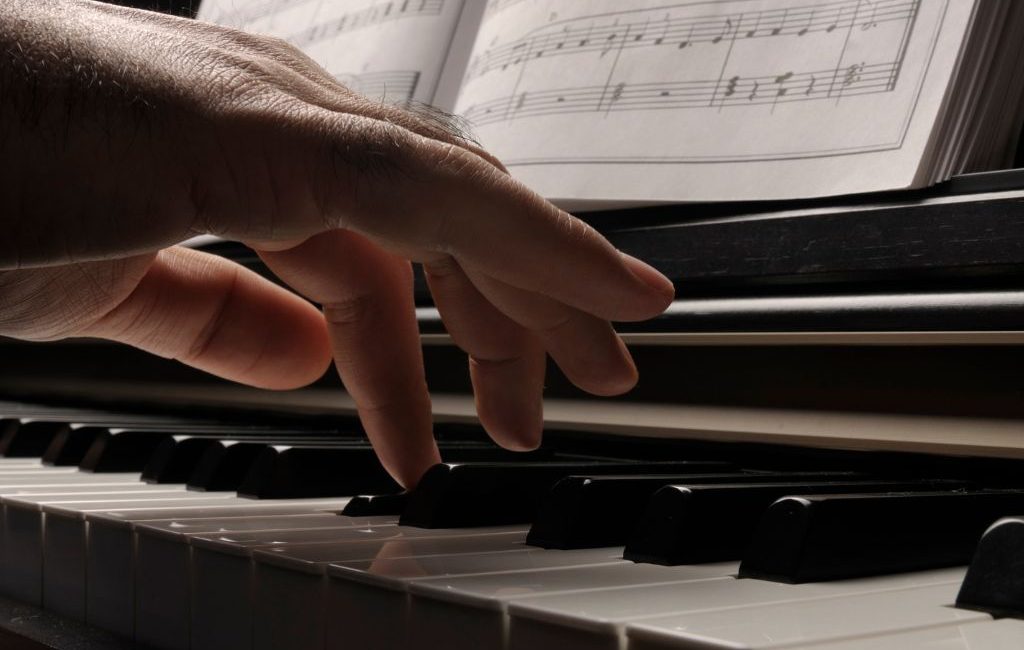
Let’s remember arpeggios, broken chords spread across the keyboard.
They require a blend of precision and fluidity, sounding utterly magical when done right. Depending on their pacing and context, they help establish the piece’s harmony and instill a sense of grandeur or continuity.
It’s not just about playing the notes; it’s about weaving them into an intricate tapestry of sound.
Diving into advanced piano techniques is like discovering new colors to paint with on a canvas. It’s an art, and the palette is endless. Enjoy each brushstroke!
Musical Forms and Structures
Musical forms are like the blueprints for compositions, guiding me through the journey of notes and motifs.
Structures, on the other hand, are the pillars that support these melodies, giving each piece its unique architectural integrity.
Understanding Musical Forms
Musical forms are the patterns and methods I use to organize sections within a piece of music.
Strophic form, or AAA, repeats the same music for each stanza of the lyrics, a bit like a verse-repeating head nodder.
The binary form is my AB split; it’s a musical conversation with two distinct parts—first, I say something, then I respond differently.
The through-composed form keeps me on my musical toes since it avoids repetition by changing the music with every stanza.
Ah, Ternary form, a cozy ABA sandwich, with the return of the A section feeling like coming home after a brief but adventurous middle journey.
Rondo form spirals out as ABACA or even ABACABA, making it a catchy, often playful game of musical peek-a-boo.
With Da Capo and Dal Segno, I dabble in delightful detours, repeating sections from the top or a sign to add unity and surprise to my performance.
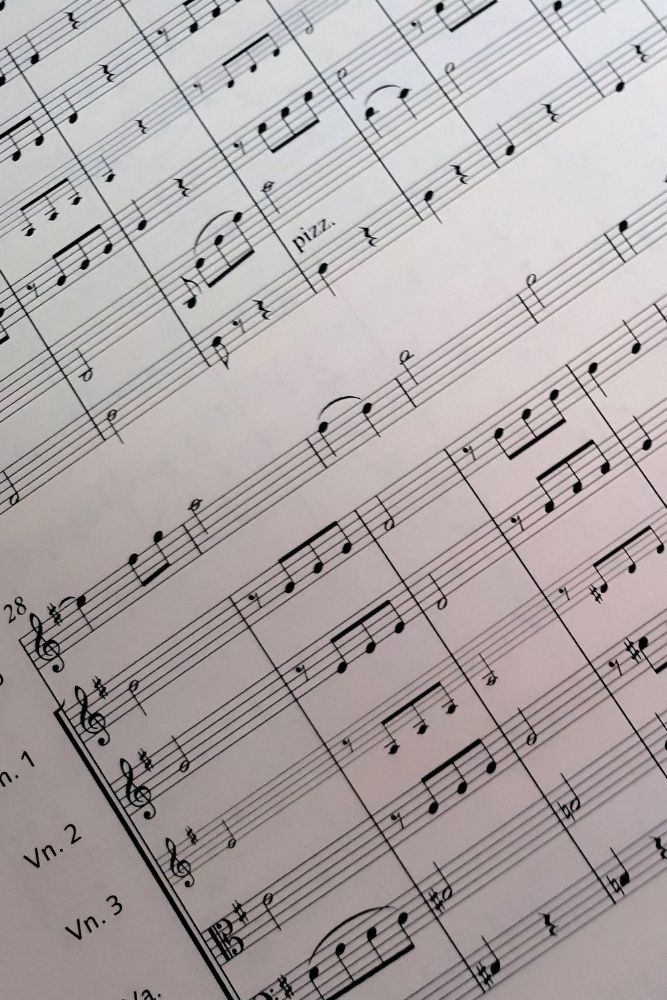
Structural Components of a Piece
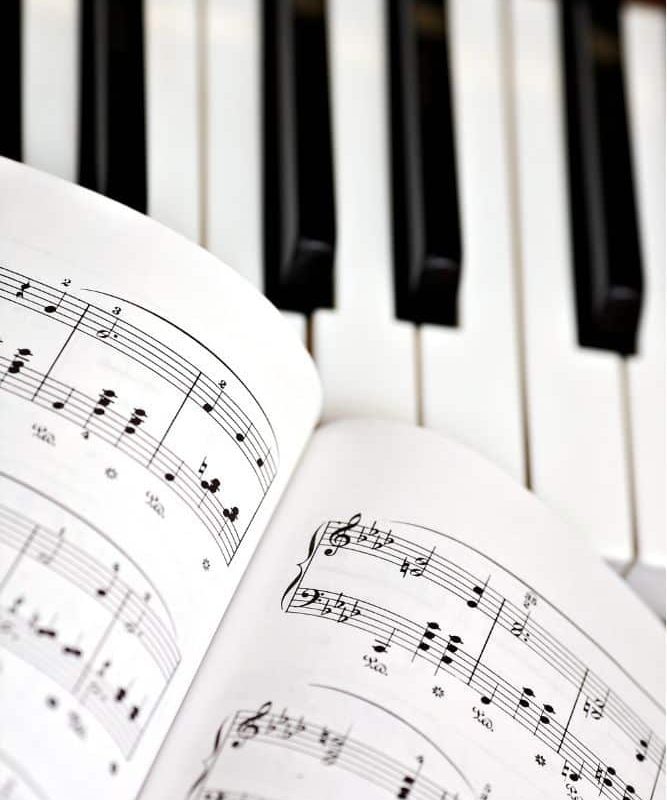
Let’s peek inside the music itself.
The movement is like a chapter in my musical storybook, a self-contained piece within a larger work, each with its character.
A coda is the grand finale—the final bow that ties up all the musical threads with flair.
The magical DC al Fine instructs me to hop back to the beginning and play until the fine or end.
DC al Coda sends me back but diverts me to the coda to wrap it up.
The structure of a piece is a map, laying out the journey of my musical exploration, and I’m the intrepid traveler following every twist and turn.
Genres and Styles
I remember discovering the vast world of piano music; it’s like stepping into a grand library, each book a new realm of sound.
Let’s cozy up and browse the delightful array of piano genres and styles, from the majestic classical pieces to the vibrant beats of modern compositions.
Classical Piano Music
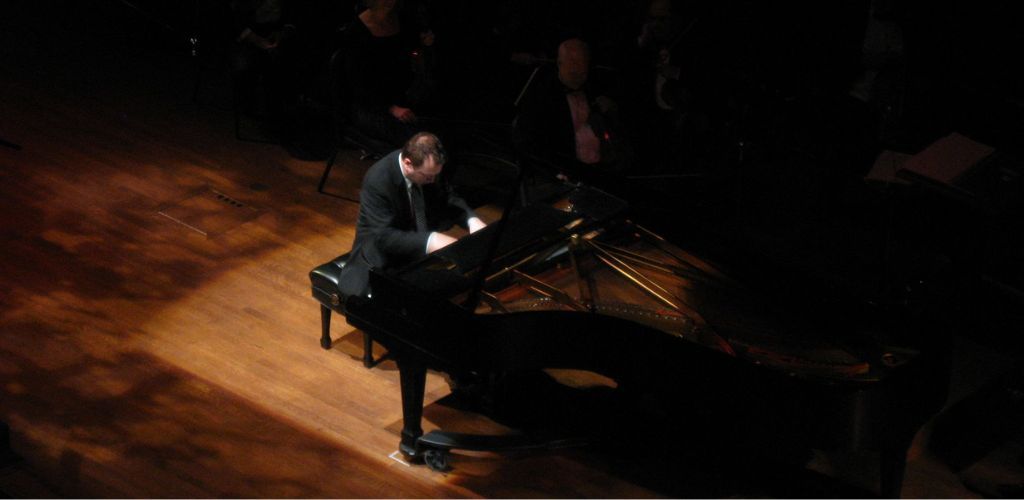
The sheer elegance of classical music on piano can’t be overstated.
From Beethoven’s famous musical composition to Chopin’s, each has left an indelible mark on what I find to be an exquisite musical library.
In the same piano piece, the mezzo-piano section called for playing two or more notes simultaneously, creating a rich and harmonious texture. The quarter note, followed by the fifth note, added a sense of rhythmic diversity and melodic movement, enriching the overall musical expression.
It’s not just about reading notes; it’s about interpreting the rich history woven into every piece.
Modern and Contemporary Styles

Now, jazz is a genre that knows how to tap my toes. With its spontaneous spirit and improvisational flair, it’s like the piano is having a thrilling conversation, full of winks and nudges.
Then there’s rock, where the piano sometimes takes a strong lead or complements the electric ensemble, creating a vibrant and dynamic sound that keeps the energy levels soaring.
On the other hand, the blues takes me on a journey through soulful melodies that echo tales of life’s ups and downs.
And let’s not forget pop piano, a familiar friend with catchy tunes that stick in my head for days. Across all these styles, the piano is as diverse and expressive as the many artists who embrace it.
Practical Application
Navigating the world of piano playing is an adventure. From technical and musical training, each step has its charm and challenges.
Practicing Piano Pieces
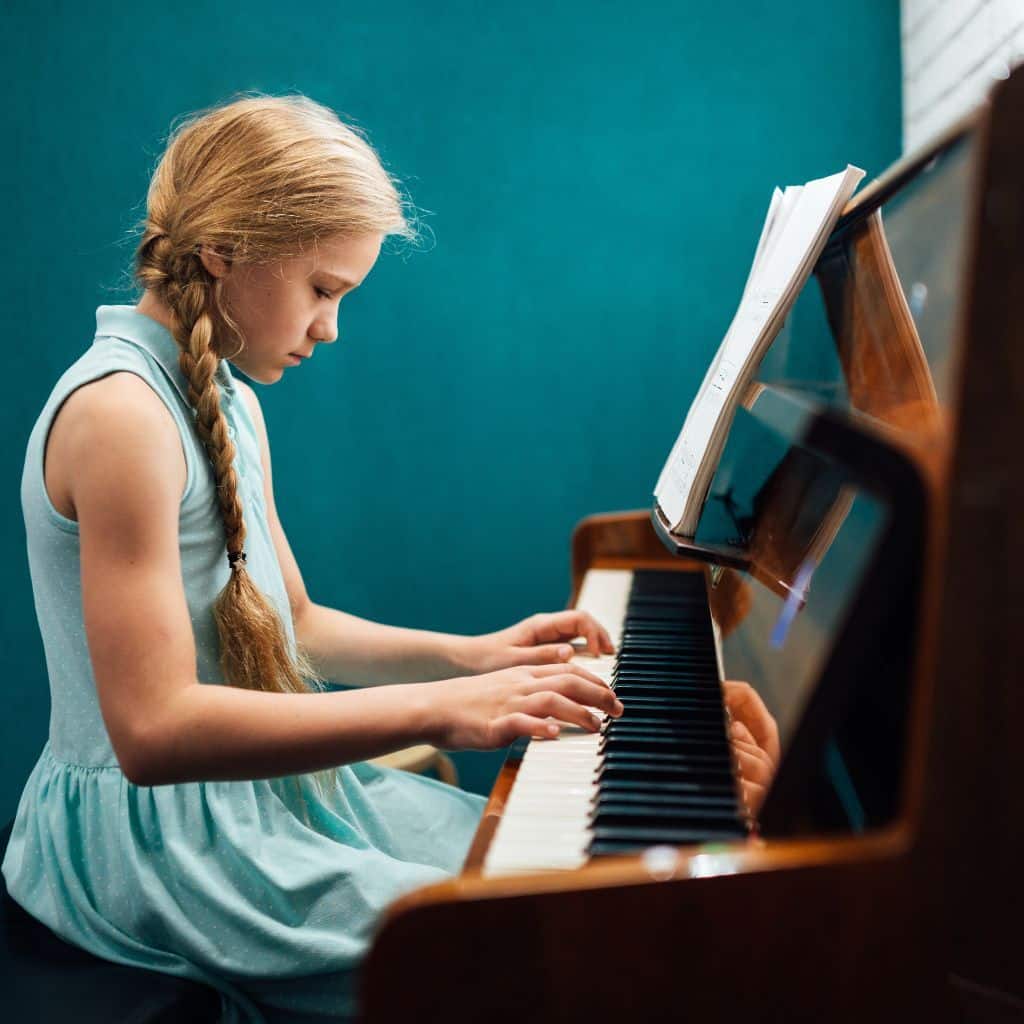
When I practice, my focus is on transforming notes into a story.
Each melody I play becomes more than just a series of sounds; it evolves into a narrative. It’s a dance of fingers across the keyboard, where each piece, be it a concerto or an etude, demands its unique touch and feel.
For instance, while practicing a nocturne, the key is to let the delicate melody sing through the night-like accompaniment. The contrast should be evident; the accompaniment supports but never overshadows.
Indeed, every piece is its world; practicing is how I bring that world to life.
Performance and Interpretation
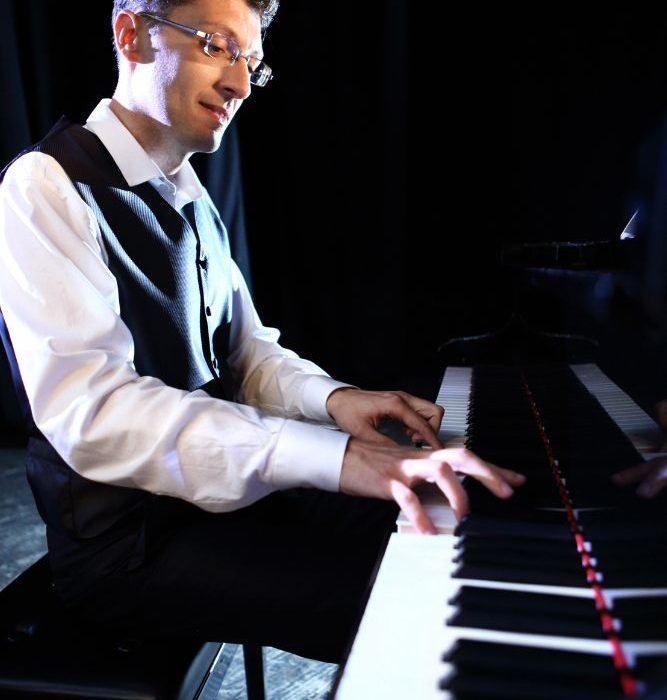
When it comes to performance, it’s all about sharing the piece’s story with the audience. The goal is to engage them, to make them feel something they didn’t expect.
It’s not just about playing the notes; it’s about conveying the emotion behind them, be it the dramatic flair of a concerto or the subtle tenderness of an etude.
As a performer, interpretation is my stamp, my signature. It’s how I take a piece and make it mine, shaping the crescendos and decrescendos, toying with tempo, and sometimes even adding an impromptu flourish.
Every performance is an opportunity to create a unique experience, and that’s a thrilling prospect for any pianist.
Top Piano Brand Guide
DP-12 Compact Digital Piano by Gear4music
DP-12 Compact Digital
Piano by Gear4music
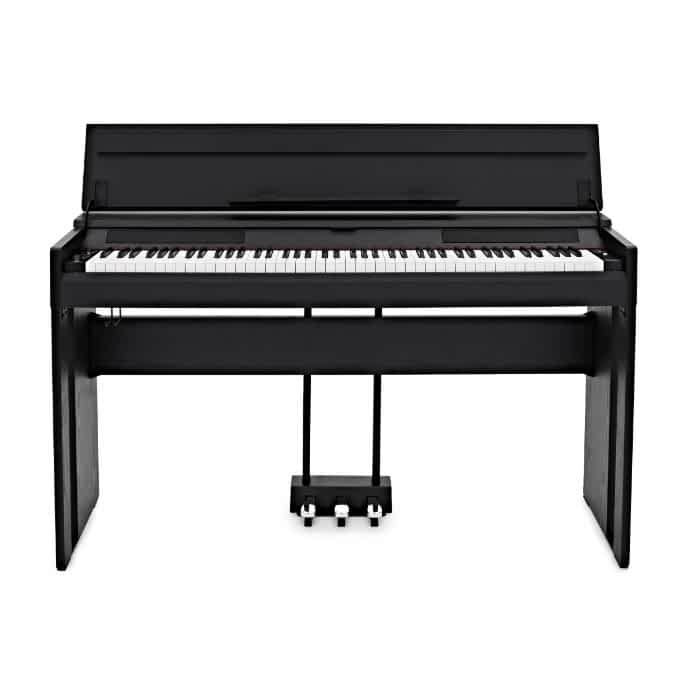
PERFECT FOR: Learning at home
FEATURES: 88-key digital piano ideal for living spaces
OTHER INFO: Synthetic ebony and ivory keys provide that premium grand feel
DP-12 Compact Digital
Piano by Gear4music
- Play with expression with a three-pedal unit and 128-note polyphony
- Get creative with 32 voices and a two-track playback recording
- With a sleek and stylish appearance
- No Bluetooth available
When you click ‘Check Price’, you’ll see there are loads of great places to buy this item. Our personal favorite is Sweetwater for the US, and Thomann and Gear4Music for the UK & Europe.
They are the largest music retailers, with excellent customer service, competitive prices, really fast shipping, and the longest guarantees.
The professional musician who wrote this article combined many things,
from the product build, manufacturer’s reputation through to feedback
from other users, to create our famous TedScore™.
Kawai CN21 Digital Piano
Kawai CN21 Digital Piano
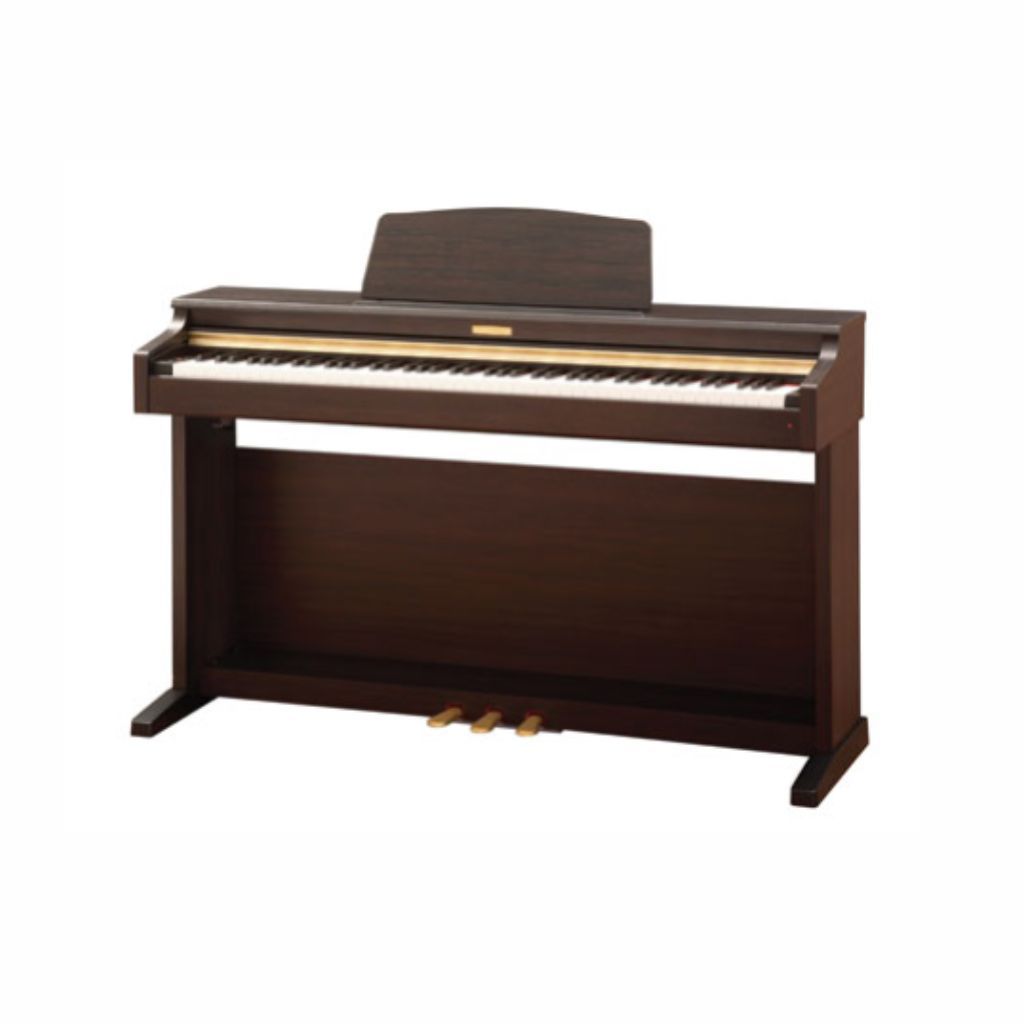
FEATURES: OLED Display That Makes Navigation Easy
OTHER INFO: Spatial Headphone Sound Technology Enhances The Depth And Realism Of The Sound
- Includes Kawai's lesson function to learn classic piano pieces
- Adjust the instrument's parameters with the Virtual Technician app
- Creates rich and expressive sounds like the SK-EX and EX concert grand pianos
- With Superior Headphone Sound technology to enhance playing experience
- Advanced mode requires an iPad to access
When you click ‘Check Price’, you’ll see there are loads of great places to buy this item. Our personal favorite is Sweetwater for the US, and Thomann and Gear4Music for the UK & Europe.
They are the largest music retailers, with excellent customer service, competitive prices, really fast shipping, and the longest guarantees.
The professional musician who wrote this article combined many things,
from the product build, manufacturer’s reputation through to feedback
from other users, to create our famous TedScore™.
Yamaha C3X PE Grand Piano
Yamaha C3X PE Grand Piano
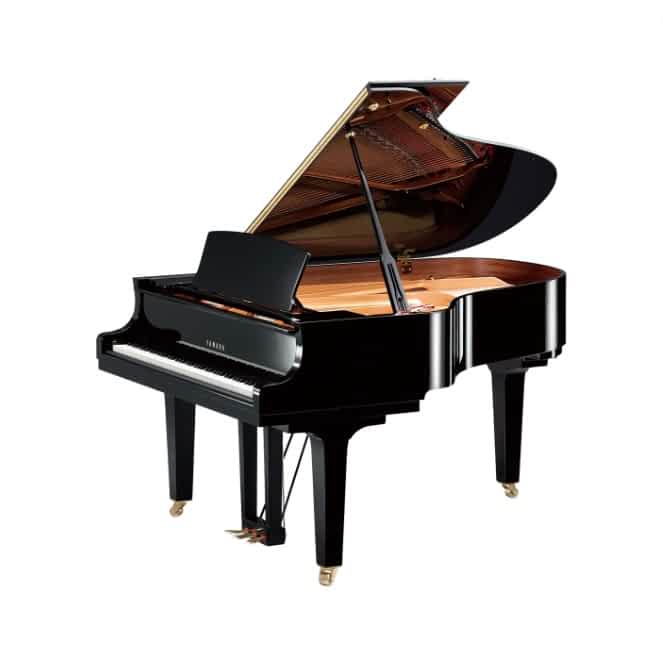
PERFECT FOR: use at home or in small performance spaces
FEATURES: Utilises 3 pedals for full sostenuto
OTHER INFO: Made from high-quality materials
Yamaha C3X PE Grand Piano
- With a length of 186 cm
- Produces beautiful, rich tones
- Available in a range of letters and models (G3, C3, C3X)
- An amazing sound that will make any pianist happy
- A piano that will last a lifetime
- Expensive piano - one of Yamaha's top-tier pianos
When you click ‘Check Price’, you’ll see there are loads of great places to buy this item. Our personal favorite is Sweetwater for the US, and Thomann and Gear4Music for the UK & Europe.
They are the largest music retailers, with excellent customer service, competitive prices, really fast shipping, and the longest guarantees.
The professional musician who wrote this article combined many things,
from the product build, manufacturer’s reputation through to feedback
from other users, to create our famous TedScore™.
Piano Terms:
Grand Finale
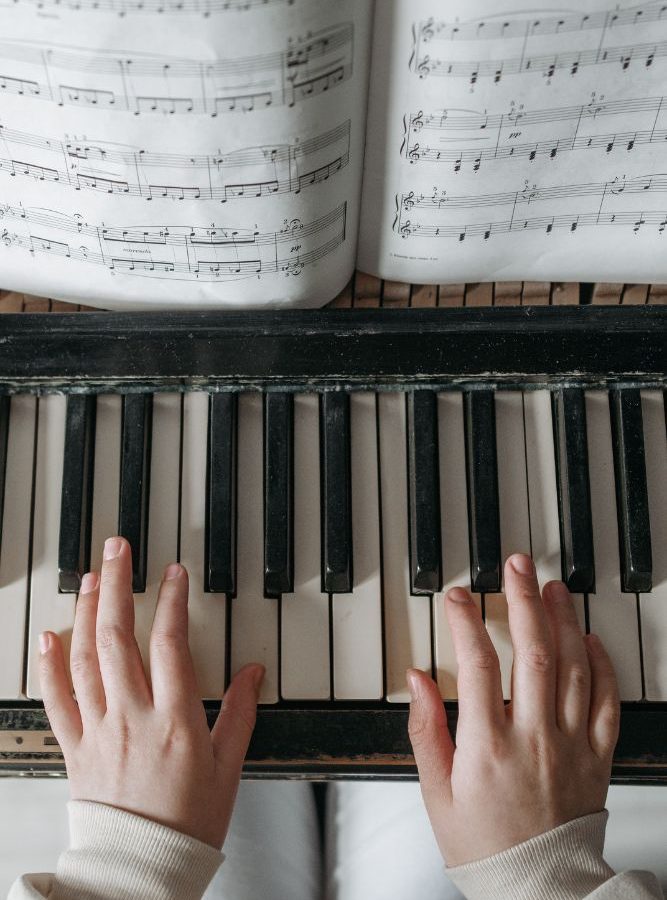
Every note I play in the concluding section is a delicate dance between what’s been written and my interpretative flair.
Legato: Play the notes smoothly, with no interruptions.
Staccato: Each note is short and detached; quite a playful touch!
Tenuto: Notes are held slightly longer, with loving stress.
Da Capo: Return to the beginning and continue until you reach ‘Fine.’
Forte: Play the notes with a strong and hearty sound.
Codas and outros are my go-to tools for concluding; they’re like the final flourish of a well-written letter. They can stand alone or draw upon the main themes to underline the end.
Pianists like me often find that pieces using sonata form conclude with a recapitulation. This means I revisit the main themes, a satisfying nod to the journey the audience and I have shared.
The recapitulation brings these themes home, grounding them in the original tonic key, providing that coveted sense of closure.
Yet, in all forms of music, the techniques for concluding are as varied as the pieces themselves. Some conclusions whisper goodbye, while others might shout a dramatic farewell.
But regardless of style, my goal is always the same: to leave my audience feeling like they’ve just had a hearty musical meal.
Wait! Before you go…
Discover the ultimate guide to piano brands and rankings in this comprehensive article.
FAQ's
Keywords for piano include keys, notes, chords, scales, dynamics, tempo, pedal, and octave. These words are essential for understanding and discussing piano playing and music theory.
If you play the musical instrument piano, you are a pianist. This involves pressing the piano key to produce musical sounds and often interpreting written music or playing by ear.
The word for playing the piano loudly is “forte,” indicated in sheet music, and signifies that the music should be played with strength and volume. It represents a dynamic marking that instructs the pianist to emphasize the notes and play them forcefully.
The piano terminology for played smoothly is “legato,” which instructs the pianist to play the notes in a connected and flowing manner without any gaps between them. It is a fundamental technique used to create a seamless and lyrical sound on the piano.










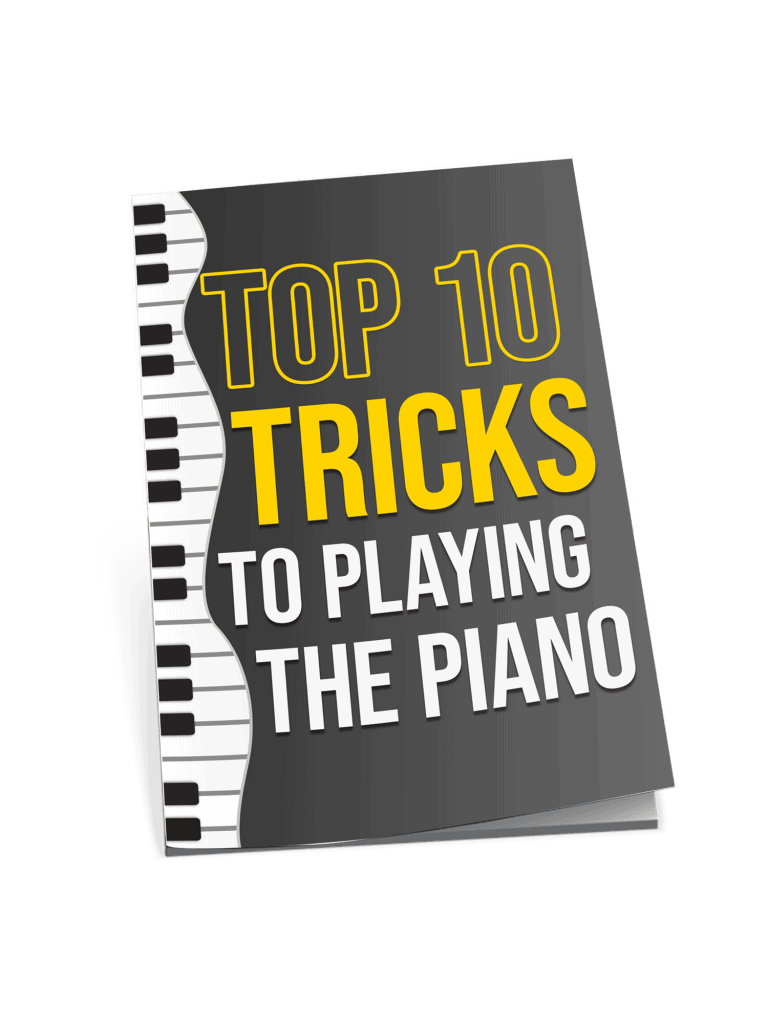
Pedals, huh? Thought those were just for special effects on guitars. Who knew?
Honestly, the section on reading sheet music is solid. It’s something a lot of my students struggle with at first, and I think the way you’ve broken it down here will really help demystify the process. Also, big fan of how you pointed out the importance of understanding musical forms. Feels like that’s something that often gets glossed over.
Loved the bit on modern and contemporary styles. It’s cool seeing how classic techniques are being incorporated into newer music. Keeps the art form alive, if you ask me.
While I appreciate the sentiment, I do believe the purity of classical forms shouldn’t be overlooked. The technique is paramount.
Totally agree! It’s fascinating to draw connections between past and present styles.
Hey Robert Emery, quick Q – for those of us just starting out, what’s the best way to practice scales without getting totally bored?